Christmas Shopping
Doing some Christmas shopping at Montebello Road in Campbell. Photographs with an iPhone Xs using Portrait mode.







Doing some Christmas shopping at Montebello Road in Campbell. Photographs with an iPhone Xs using Portrait mode.







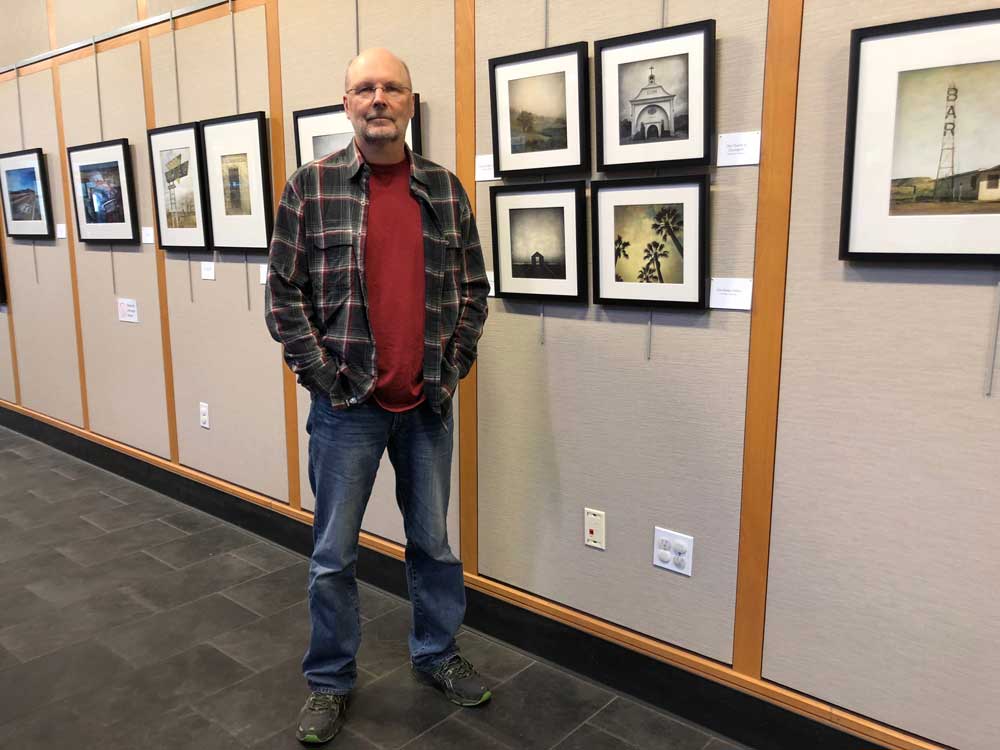
I am pleased to announce that I have an exhibit of photographs on display in the lobby of the Saratoga Public Library. It’s my hometown library, so I’m happy to be there! I originally submitted an application over two years ago, but the demand was such that I was scheduled two years in advance. Well, the time finally came and we installed the exhibit on Monday. It will be up through Friday, March 1, 2019.
I choose the theme “Road Trip.” Here is the description I included in the exhibit:
I enjoy taking road trips, whether they be long distance or just for the day. Aside from having radar for taquerias and Mexican restaurants, I always look for interesting roadside vignettes. Neon signs and unusual or abandoned structures are high on my list, especially those that show age or a sense of place.
Several of these images come from the Bay Area while driving around looking for things to photograph. The one exception is the oak tree in Fremont Older, which was made while hiking in the preserve. But I felt that it fit with the other local images, so it is included here. Other images were made elsewhere in California, while another batch comes from New Mexico, a state I have driven extensively and never tire of. One last image comes from an amazing automobile junk yard in Georgia.
Many of my photographs are manipulated with post-processing techniques that add texture and mood. I began experimenting with these processes using apps on my iPhone and have since transferred them to Photoshop.
More of my photographs can be found at my website, including many from the Bay Area. Other photographic interests include railroads and railroaders, automobiles, commercial archeology, and musicians.
All prints are hand-signed and titled, and framed using archival materials. For inquiries, contact Curt using one of the methods below.
I made a gallery of the images that are on display, which you can view here. If you live in or around Saratoga, I hope you can see the prints in person!

This is a raccoon footprint preserved in dried mud in a salt flat here in the Bay Area. Over the last year and a half, I’ve gotten interested in animal tracking. Not trailing animals, attempting to follow or find them, but identifying their tracks and types of movement. It has opened up an additional vista into the landscape. We don’t often see animals such as bobcats, mountain lions, or foxes, but when they leave tracks behind we have evidence of their presence.
Last week I participated in a Cybertracker track and sign evaluation. Cybertracker is the international standard for wildlife tracking and certification. Over the course of a day and a half, we were asked 54 questions about tracks, sign, and gaits (movement patterns). In all, we evaluated 32 species, including 14 mammals, 11 birds, three reptiles/amphibians, and two invertebrates. I achieved a Level 3 certification, which means that I scored 90% or higher. To get to Level 4, you have to score 100%. There is also a Specialist designation, which also requires scoring 100% in the presence of two evaluators over the course of a more rigorous two-day evaluation. Something to shoot for. 🙂
A musician friend of mine, Scott Kinsey, performed in Los Angeles a couple of weeks ago, and I was able to catch the band for a night before heading to New Mexico. Here are some some photos I took of the Zawinul Legacy Band.
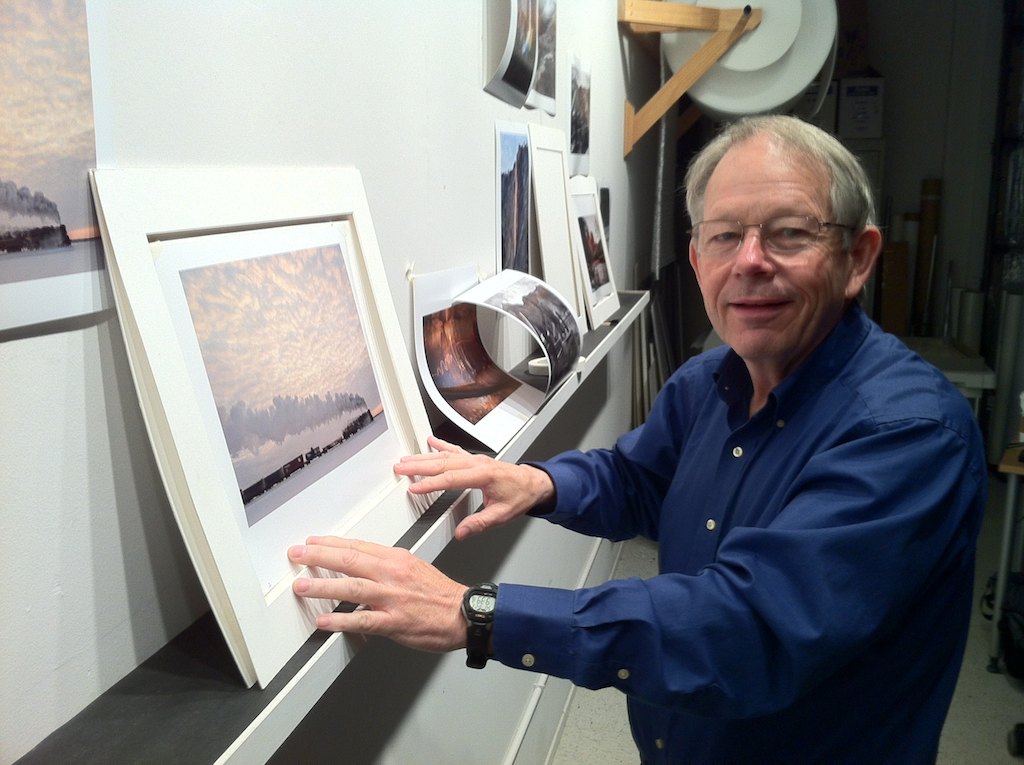
Last weekend I attended Charles Cramer’s Digital Printing for the Fine Art Photographer workshop. (That’s Charlie pictured above, about to take a look at one of my test prints.) It’s something I’ve wanted to do for years, and I’m glad that I did. I had a great time and came back energized to take my printing to the next level.
Charlie’s workshop is a three-day intensive class, going twelve hours on Friday and Saturday, and nine hours on Sunday. It is limited to eight students, allowing for plenty of one-on-one time with Charlie, who has devoted much of his life to making the finest photographic prints possible. (And his prints absolutely glow.) For the first half of the workshop we reviewed post-processing techniques for making fine art prints from our photographs using Adobe Lightroom and Photoshop. Personally, I’m an Apple Aperture user and the archiving and organizing features of Aperture are so superior to Lightroom that I don’t intend to switch anytime soon. Nevertheless, it was good to absorb Charlie’s Lightroom/Photoshop workflow and the finer points of using Photoshop to improve images, many of which also apply to Aperture. I learned a number of techniques that either I hadn’t thought of before, or which I had been unaware. This will definitely help me in the future.
We also did print critiques. Each student brought ten prints, which we reviewed as a group. Charlie believes in positive reinforcement, not the other way around. Charlie is an excellent teacher and a pleasure to be around. As a fellow student expressed via email, Charlie and his assistant, Rex Naden, treated all of the students with patience and respect, regardless of their individual levels of technical or artistic development.
For the second half of the workshop, we were turned loose on our own images, putting the techniques we learned into practice. The small class size allowed for plenty of one-on-one time with Charlie. In my case, I would get started on an image and then explain to Charlie what I had done and my thinking behind it. He would then offer suggestions and nudge me toward a better direction. We had access to large format Epson printers and were able to make several test prints. Charlie helped us evaluate them to determine what else needed to done to shape the image into an excellent print. Once satisfied, we then were able to make 17×22 prints, and one print up to 33 inches long. Many students worked on images they brought for the critique, and the improvement in them was quite evident and impressive. I was able to finish four images for large printing (see below), and got a good start on a couple of others.
Charlie emphasized that just because an image looks good on a computer display, it doesn’t mean it will look good as print. But an image that makes for an excellent print will also look good on screen. Therefore, to properly evaluate an image, you must make test prints as you process it. One thing this encourage me to do is to be more deliberate in my printing. In the past, I would often just print images to see what they looked like, accepting that some worked and some didn’t, and rarely taking it further than that. Now I’m excited by the concept of developing “master” images, or a true portfolio of finely printed images.
Of course, that will depend on my ability to put what I learned into practice. I’m pretty confident about the Photoshop techniques, but the hard part is that I won’t have the benefit of Charlie’s aesthetics and wisdom to guide me. Nevertheless, the workshop will serve as a base from which to continue developing. I may well take Charlie’s alumni class so that I can absorb even more from a master photographer and printer.
Here are the four images I finished at the workshop.
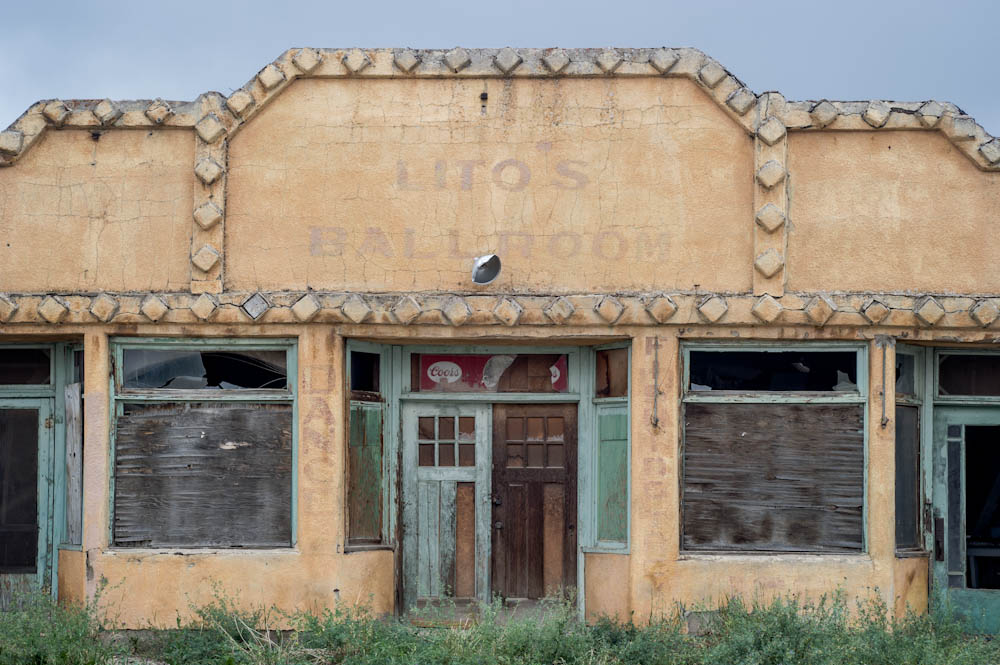
Lito’s Ballroom
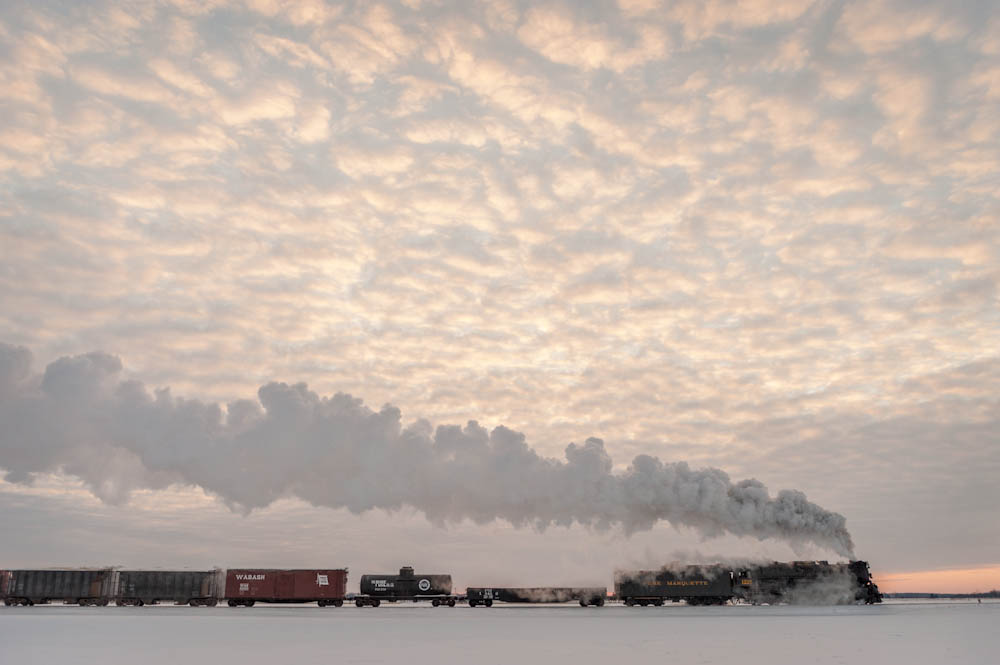
1225 At Dawn
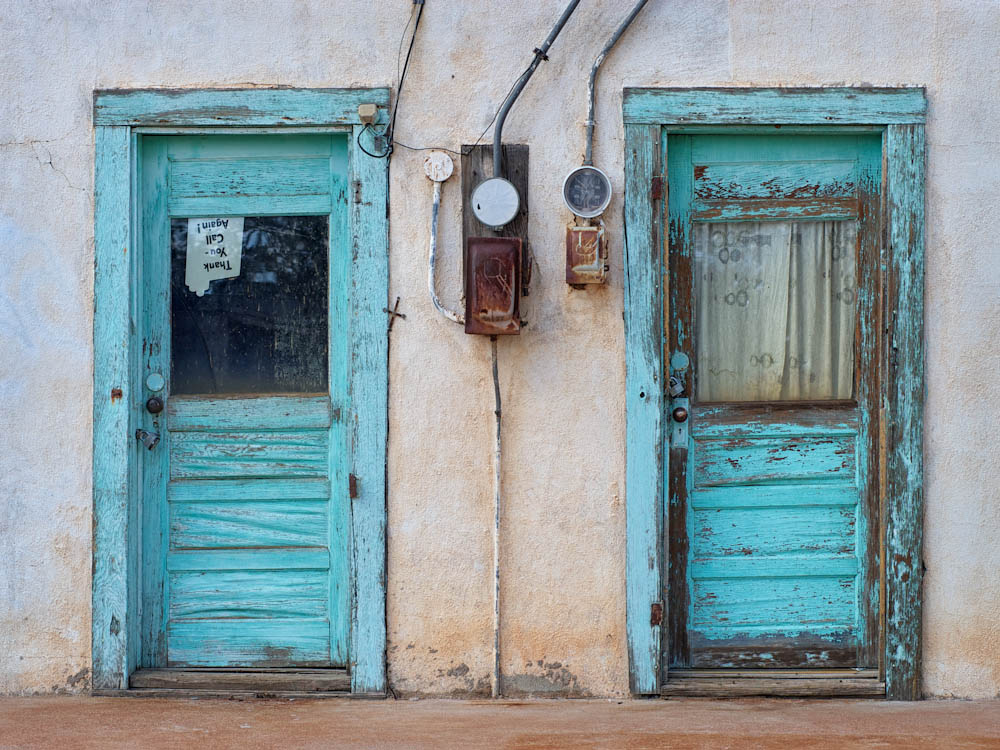
The Blue Doors of Encino
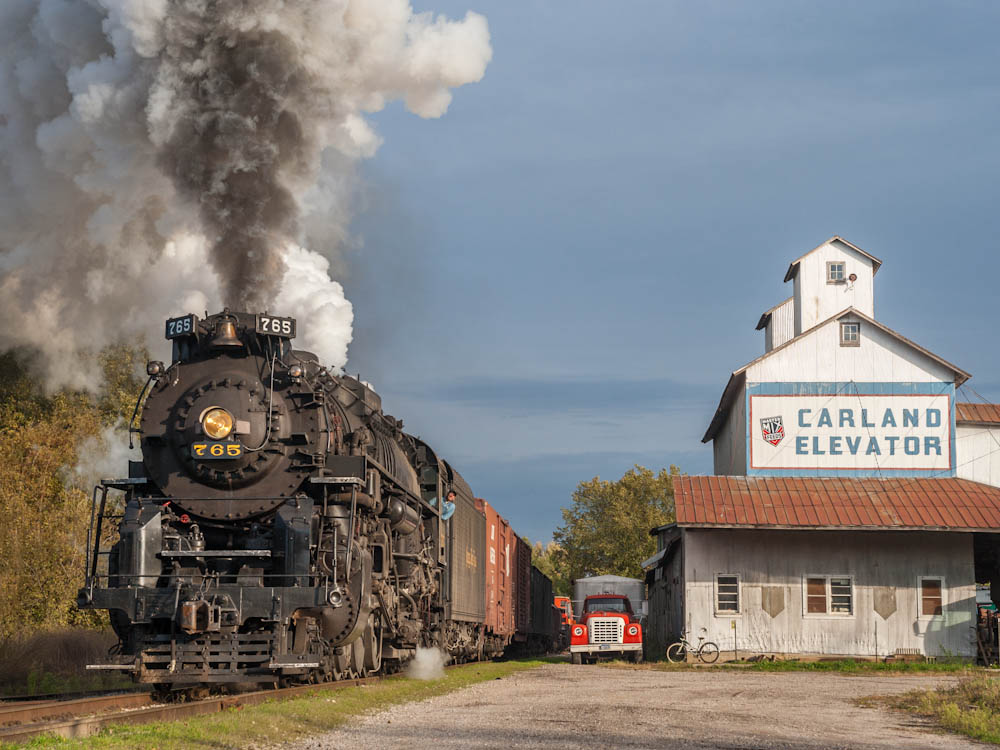
Carland Elevator
I was lucky enough to attend the Kentucky Derby for the seventh time as part of the Sports Illustrated crew. Here are 15 or so from this year’s trip. I don’t have any of the race itself because it was doing work for SI at the time.
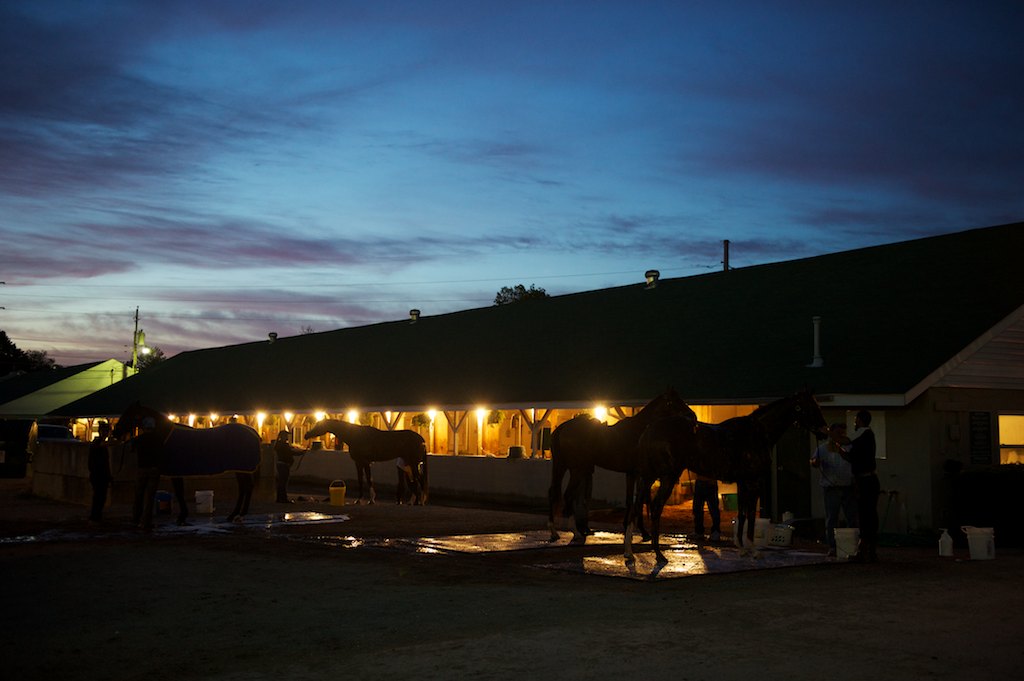
A scene from “the backside,” where the barns are located. It’s called the backside because it’s located on the opposite side of the track from the grandstands. More than 40 barns are tucked into a tight space and a lot of activity takes place out in the open. Horses train in the early morning hours and the backside is a flurry of activity well before dawn.
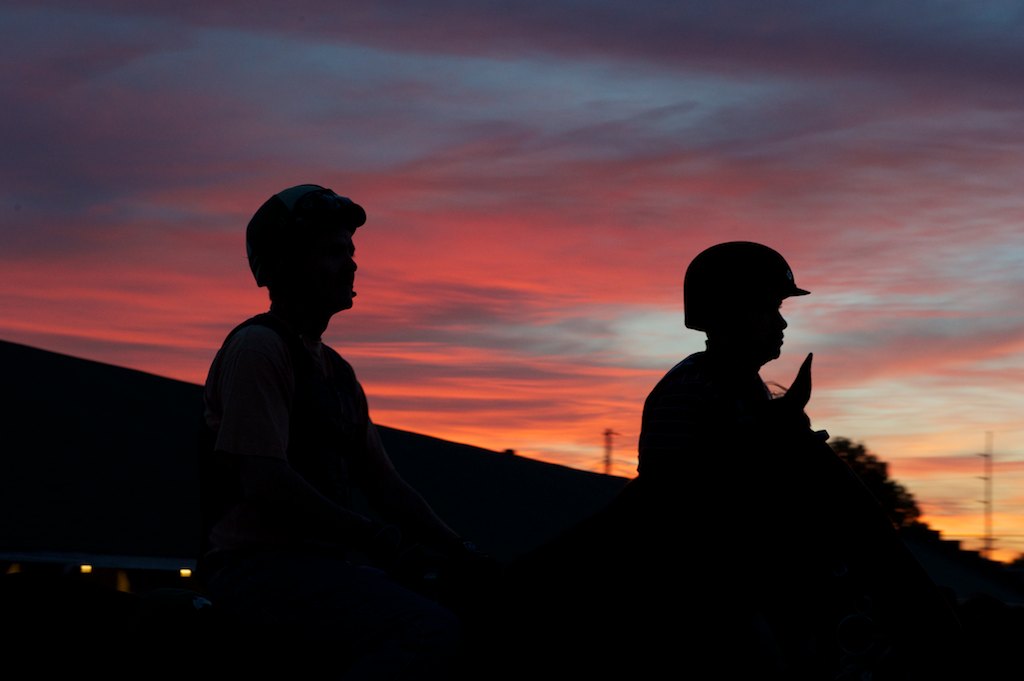
Exercise riders silhouetted by the sunrise.
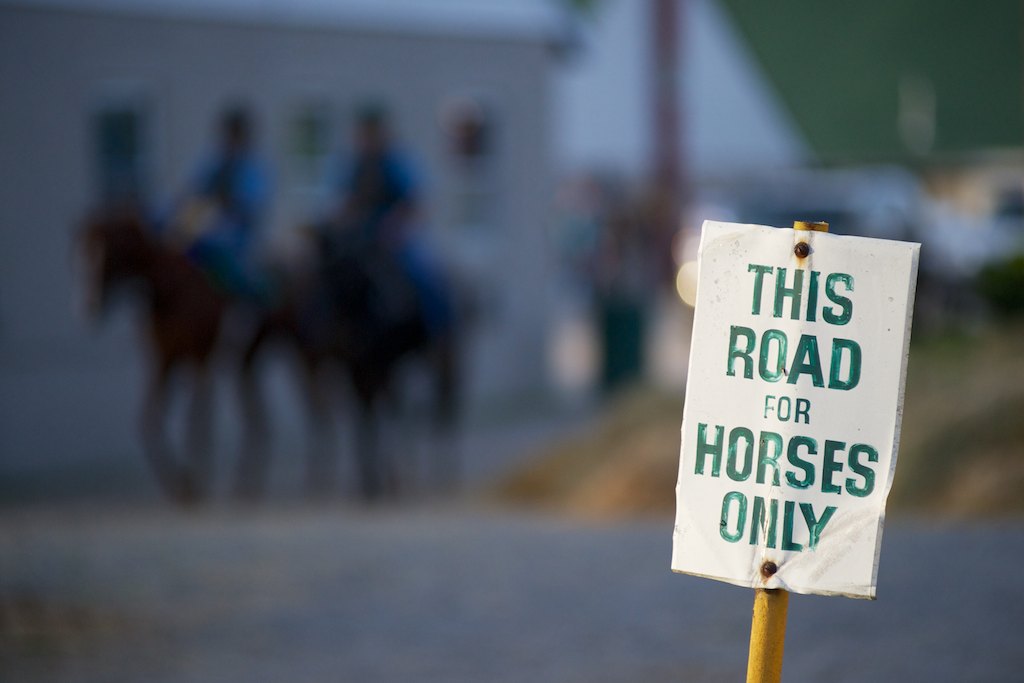
I seem to take this photo every year. I’m easily amused.
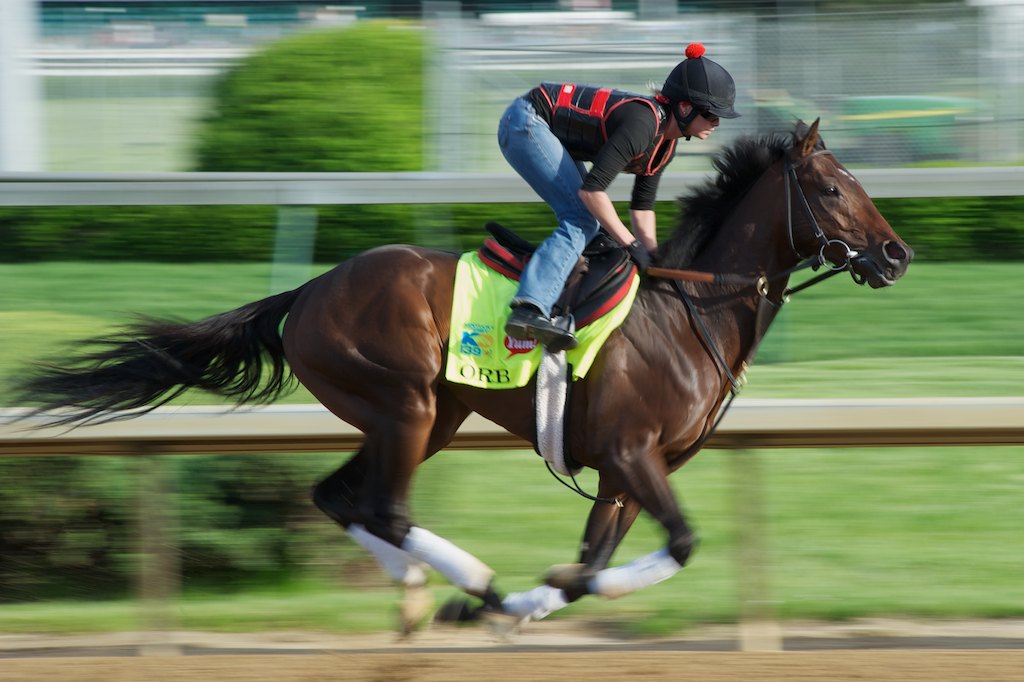
This is Orb, the Derby winner, working out on the Thursday before the race. A magnificent animal. Starting at 8:30 in the morning, only Derby horses are allowed on the track for a 15 minute window. A huge line of photojournalists gather along the outside rail to get as many of the horses as they can so that the images can be transmitted back to their publications. Some trainers seem to operate in stealth mode, however, and send their Derby horses out under the cover of darkness at 5:30 or 6:00 a.m.
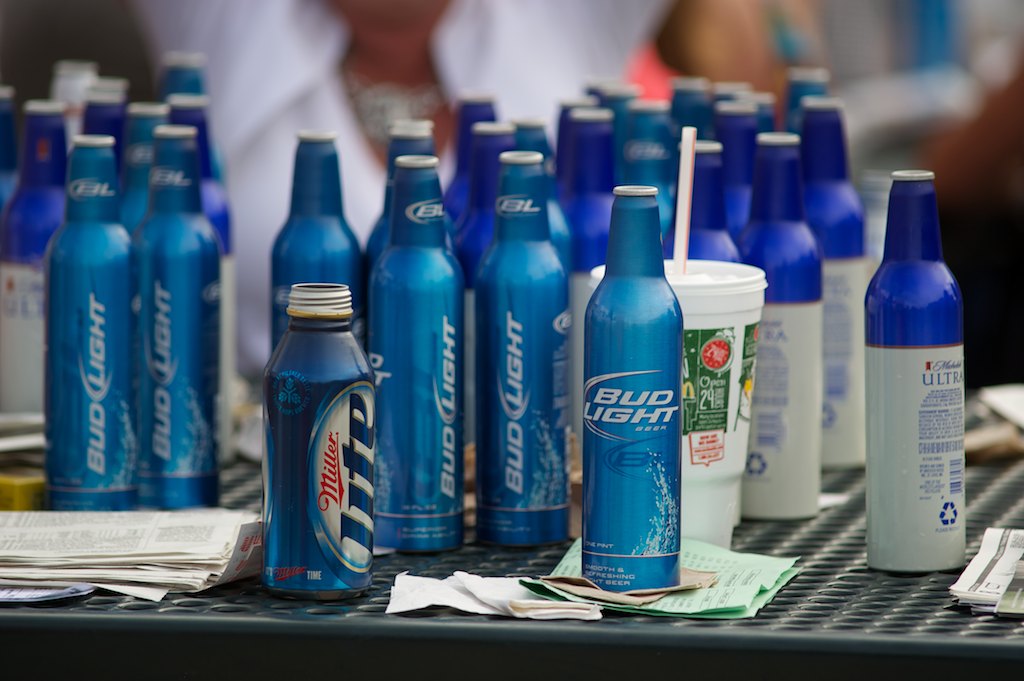
Many libations were consumed, though not by us.
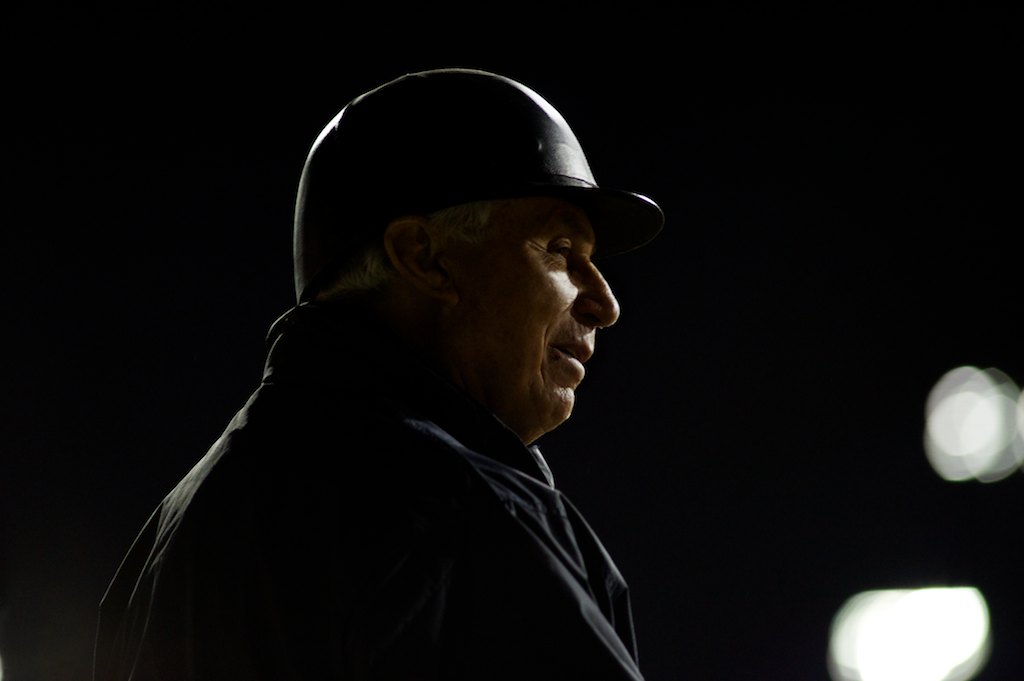
This is trainer D. Wayne Lucas mounted on his horse while his charges workout before 6:00 a.m. At age 77, he’s the patriarch of the backside. He likes to accompany his horses out onto the track, something I don’t see the other trainers do. They usually watch from on foot next to the track. Seems like a cool guy.
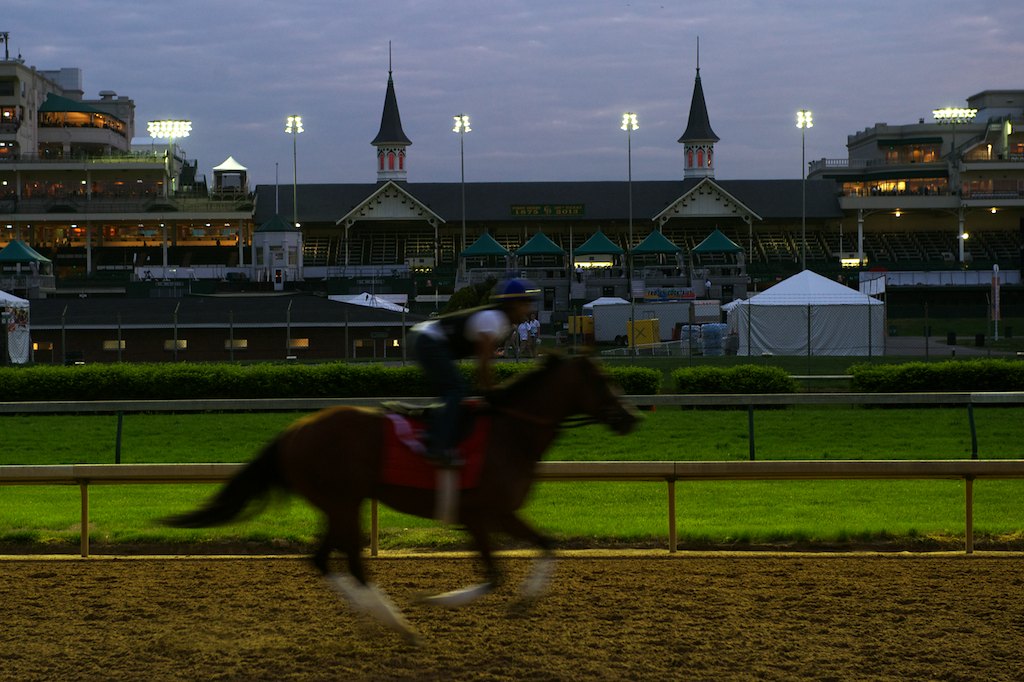
From the backside early in the morning. The twin spires are iconic symbols of Churchill Downs. The track lights were installed only a couple of years ago. Before that, horses trained in the dark until the sun came up.
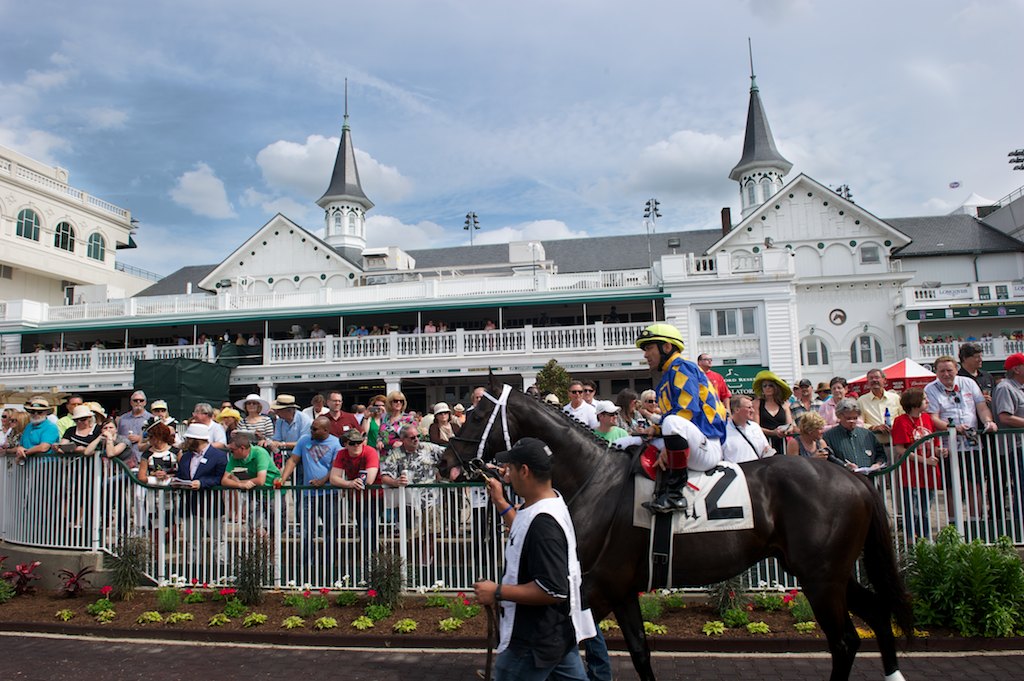
This shot is taken from the paddock on the opposite side of the track. Before each race, the horses are led around the track from the backside to a tunnel through the grandstands and out the other side to the paddock. There’s a small oval here where the horses are paraded several times around in front of those spectators that can actually see them. Then the jockeys emerge and mount up for the trip back through the tunnel and onto the track. On Derby day, the crowd surrounding the paddock is so thick that it’s almost impossible make your way through it.
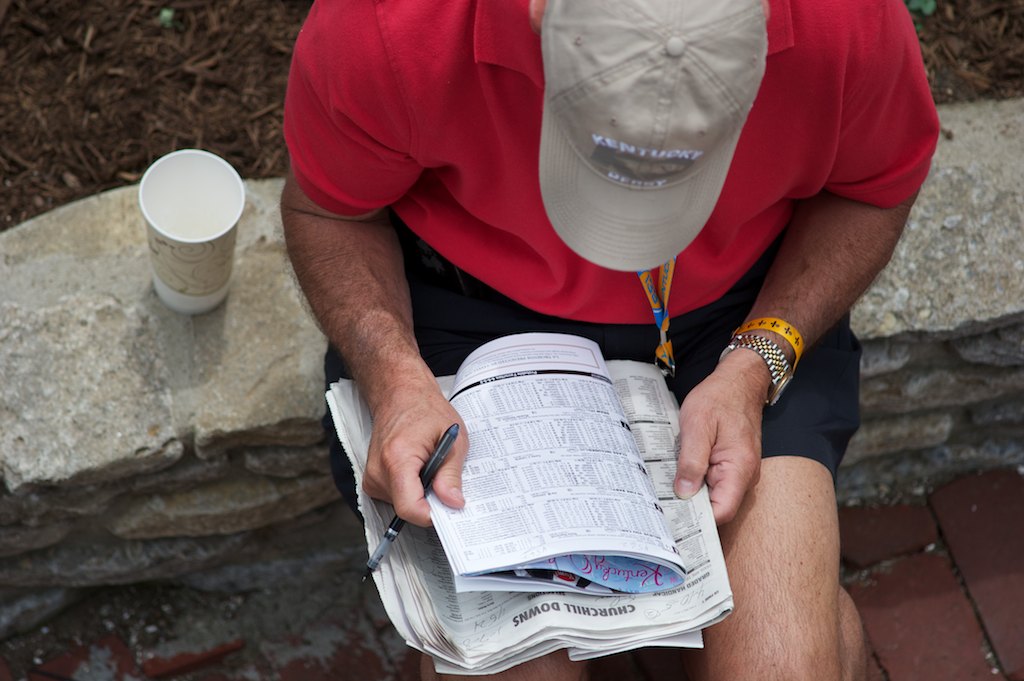
Lots of study goes into selecting the winner. It usually doesn’t work.
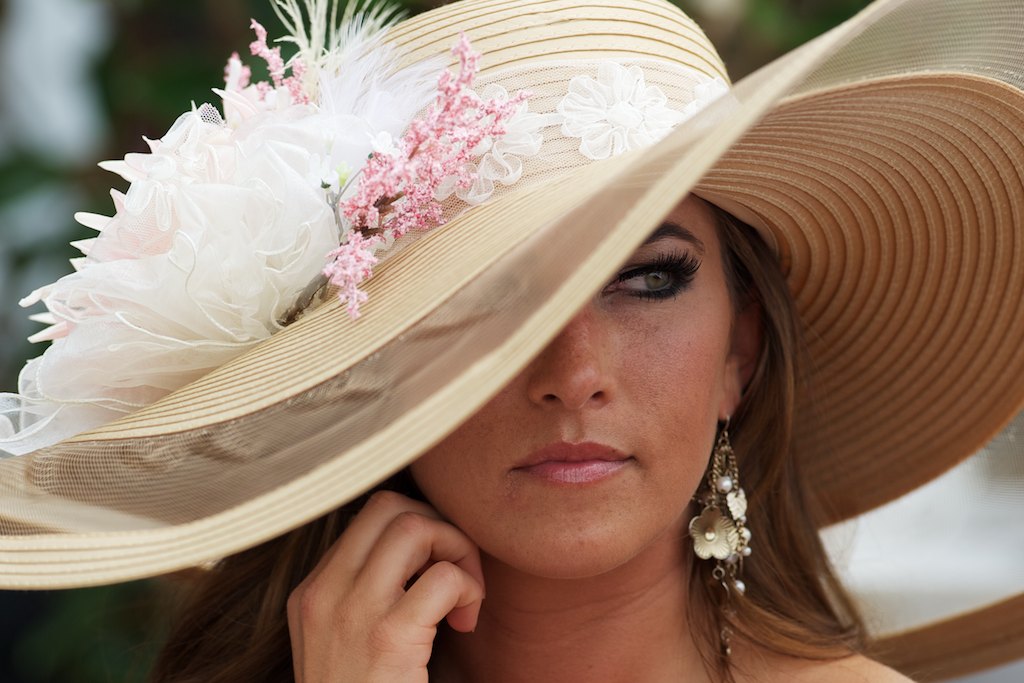
Of course, hats are a big part of the Derby experience.
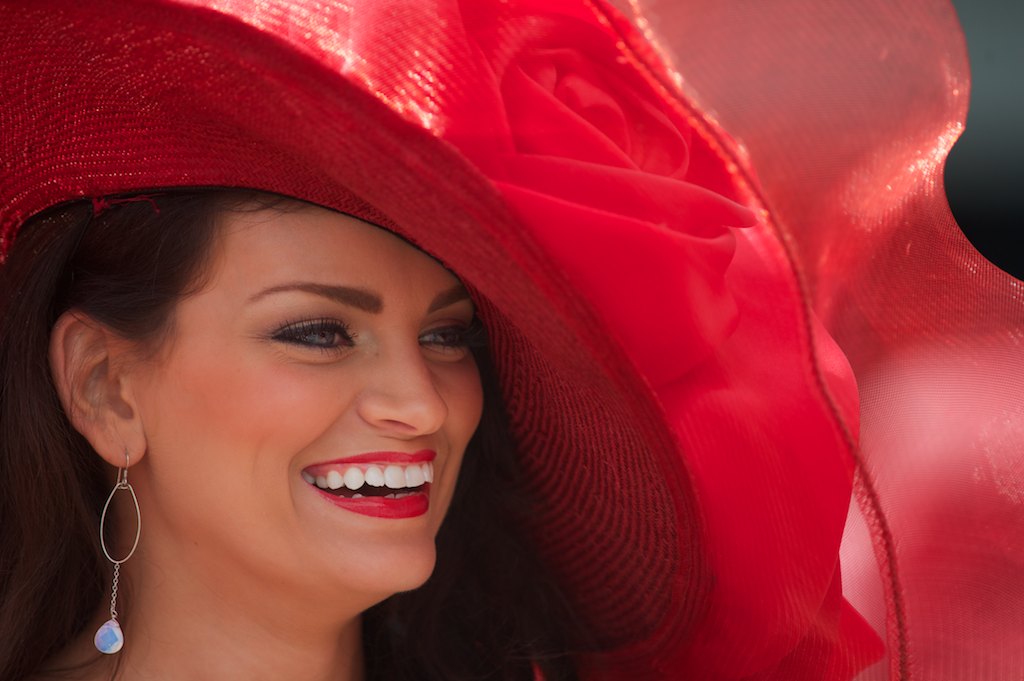
Part of the fun is prowling the crowds and stands looking for people to shoot. Women who dress like this will instantly assume a pose when they see a camera pointed at them; I like to catch them in a more candid way. Sometimes I feel like a stalker with a camera.)
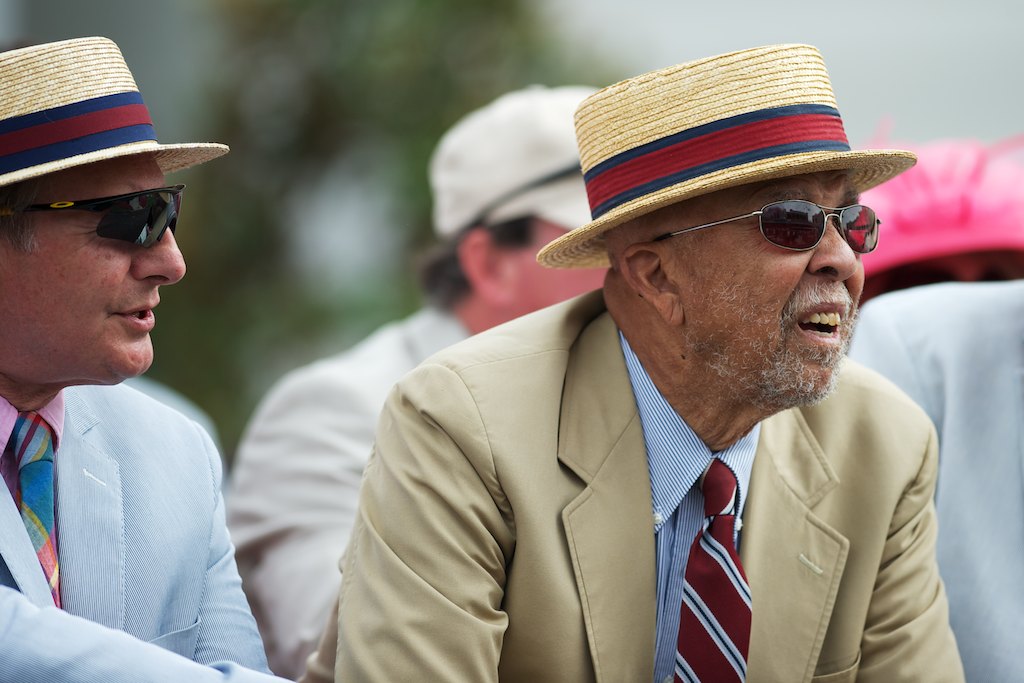
The guys get in on the act, too. People-watching doesn’t get much better than this.
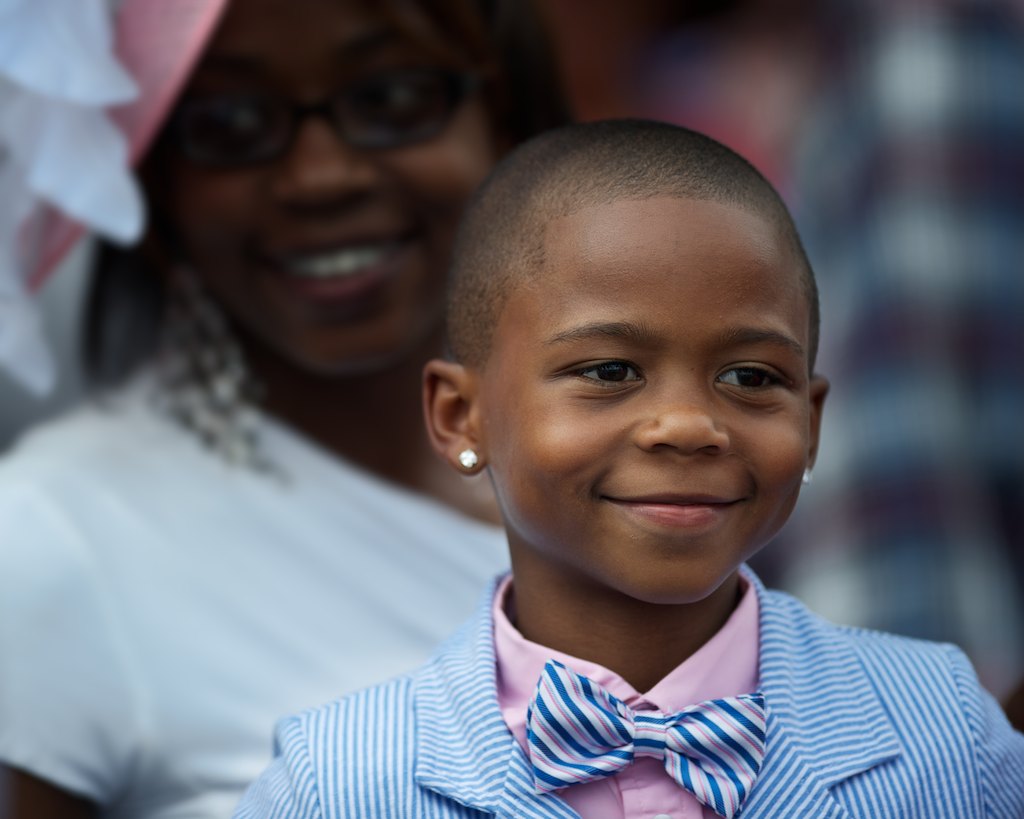
This little guy was sitting in a box right along the rail near the finish line. Primo seats–except when it rains. One of the perks of my photographer’s pass is that it grants me access to the track itself, so I could walk along the front of the grandstands looking for subjects.
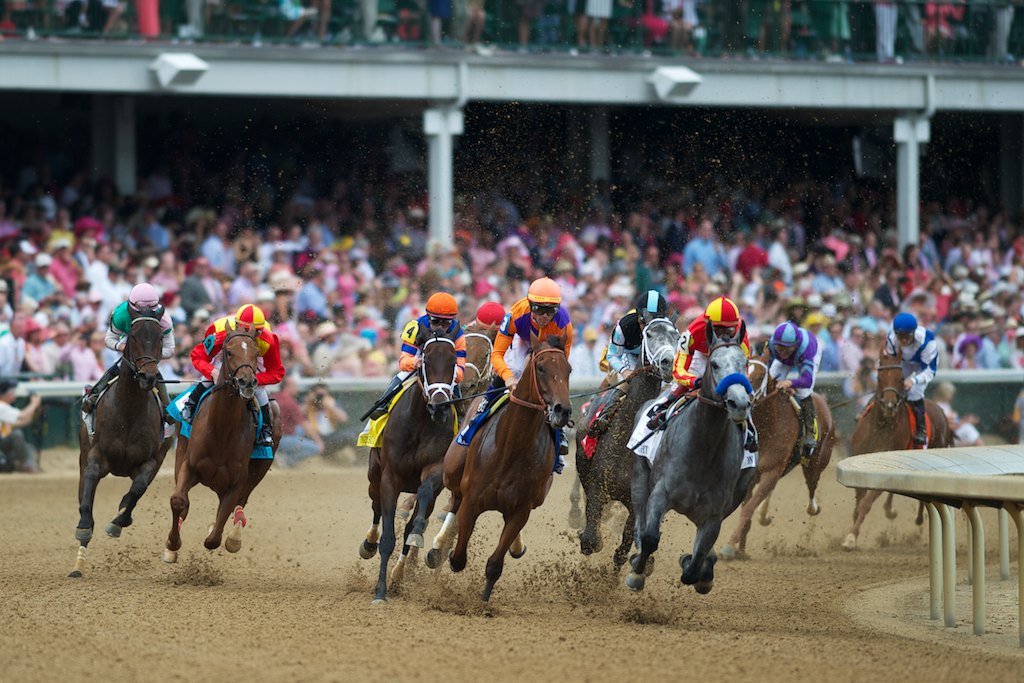
An obligatory racing shot from turn one. This is the Kentucky Oaks run on Friday for three-year old fillies. The Derby is the big one, of course, drawing upwards of 160,000 spectators, but the Oaks drew over 100,000 people this year, making it probably the second most attended horse race in America. Louisville schools are even closed on Oaks day. For this shot, I was kneeling next to the outside rail on the track with a 300mm–not really a long enough lens for this shot, so I cropped it.
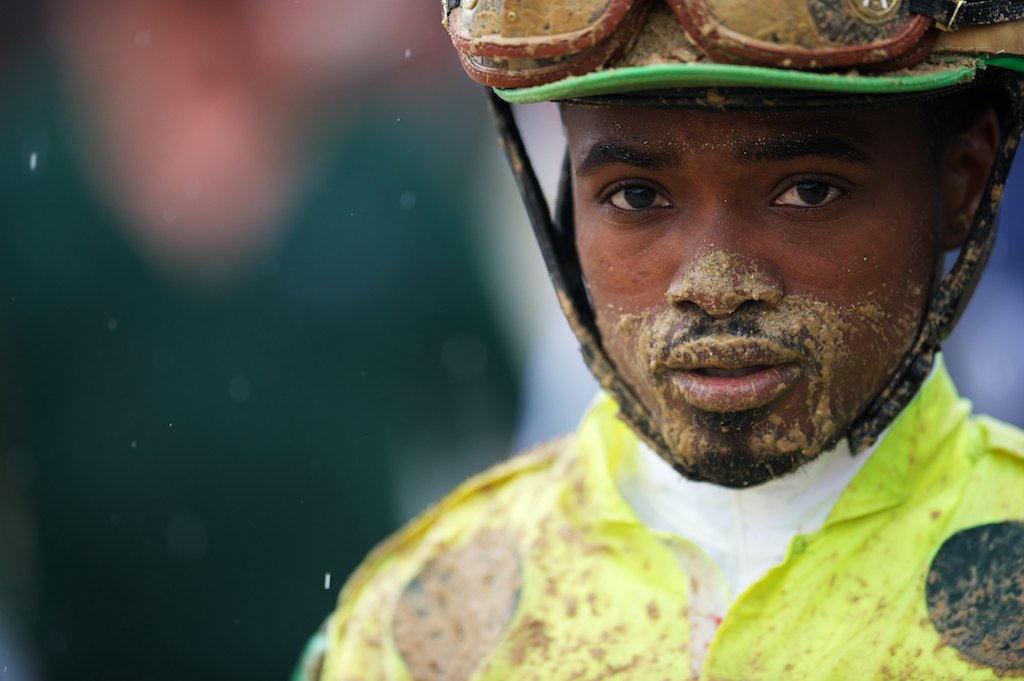
This is Kevin Krigger, the first African-American jockey in the Derby in more than a decade. I shot this on Saturday when rain made the track muddy.
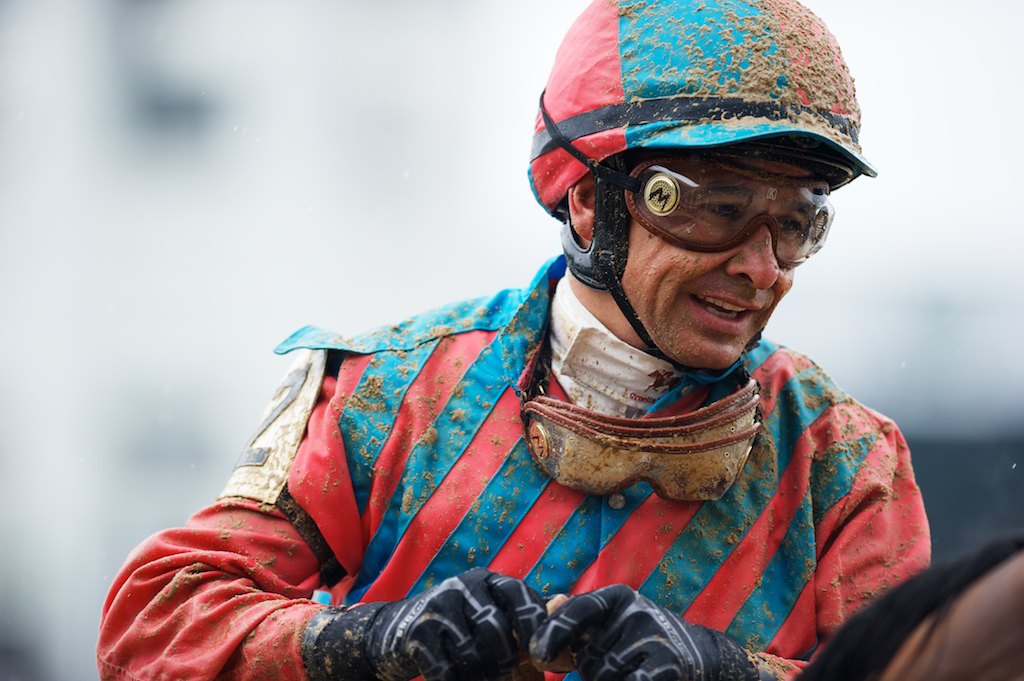
Depending on the track conditions jockeys will wear several pairs of goggles one on top of the other, pulling each pair down to their chest as they get covered with mud during the race. I’ve even heard of jockeys stripping their last pair off and going without to the finish. This is Mike Smith. He was down to his last pair, but he won the race so he wasn’t getting smattered with mud at the end.
Babe the Muffler Man stands watch at Babe’s Mufflers on The Alameda in San Jose. Supposedly he’s been there since at least 1960, but the leading authority on muffler men claims the first one was made in about 1962. It was a Paul Bunyan character. The hands were arranged to hold his axe, but the clever creators realized he could be repurposed to hold lots of things. Like, say, a muffler!